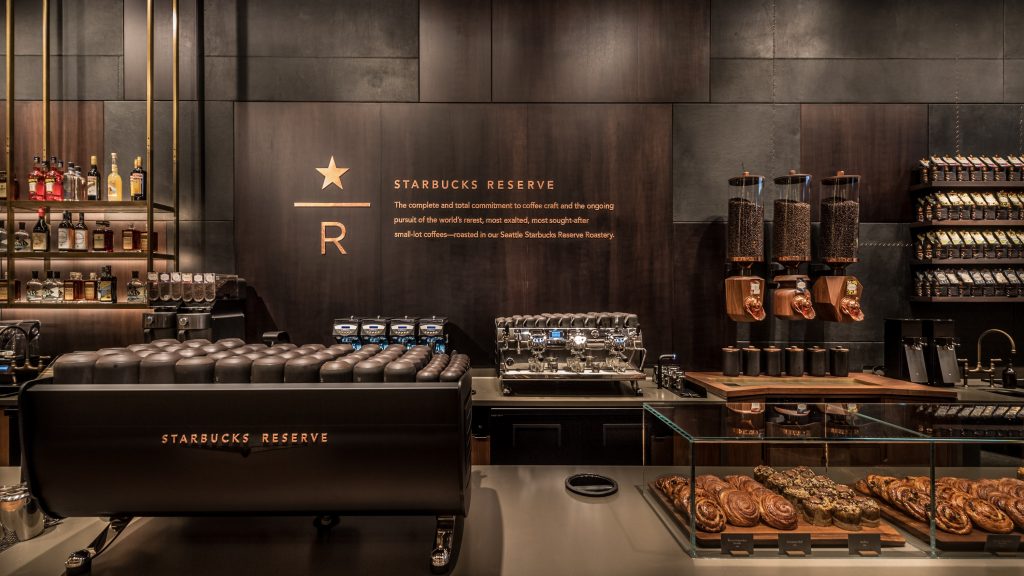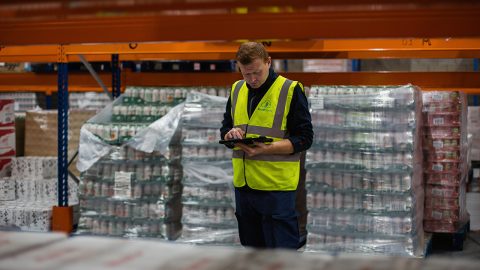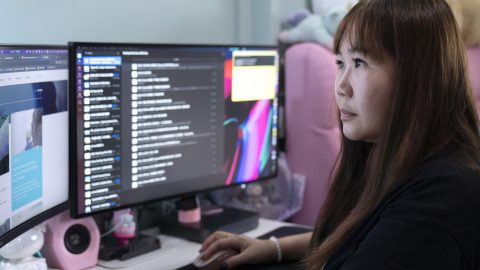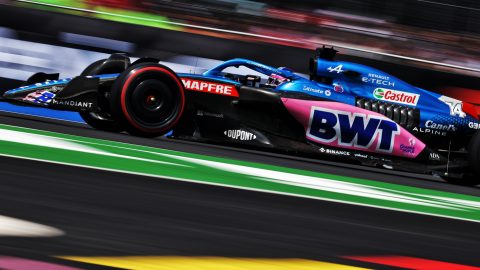A Q&A with Starbucks CTO Gerri Martin-Flickinger
It’s the morning rush at Starbucks – and Starbucks partners (employees) are focused on connecting with customers and serving each beverage with a smile.
Mobile Order & Pay currently accounts for 12 percent of transactions in U.S. company-operated stores, and with expectations for that figure to continue growing, Starbucks is relying on an array of technology solutions to meet demand and enable partners. Partnering with Microsoft – in the cloud and in stores – is helping Starbucks to innovate in ways that are seamless for customers and allow Starbucks partners to spend more time connecting with customers and crafting the perfect coffee experience.
This week in Seattle, several Starbucks technologists are presenting these tools at the Microsoft Build 2018 developer conference.
Transform traveled to Starbucks Support Center (headquarters) in Seattle to speak with Gerri Martin-Flickinger, the company’s executive vice president and chief technology officer, who joined Starbucks in 2015. She dug into the details of where digital meets dark roast.

TRANSFORM: Why is it important for consumers to know that Starbucks is a technology company?
GERRI MARTIN-FLICKINGER: I’d love to start with: what is Starbucks? Starbucks is an experience. And it’s centered around that customer connection in the store, the human connection, one person, one cup, one neighborhood at a time. I think that mission is so critical to how technology has to show up for us.
Tech has to amplify that human connection, not get in the way of it. It is not about building cool, shiny tech. It’s about building tech that appeals to that connection and craft that is uniquely Starbucks.
One example of this is the technology in place to make a more seamless experience for people who choose convenient mobile ordering. When you go into our busiest (mobile-connected) stores, you see something called a Digital Order Manager that baristas use to indicate that your drink is ready.
If you’re a mobile customer, you’ll get a notification on your phone that your drink is now ready, which is a cool way to help that experience with the barista be much more intentional. And the barista can take that moment to hand you your coffee with that same smile and name recognition that you’ve come to expect from Starbucks.
TRANFORM: Why is tech important for a better cup of coffee?
MARTIN-FLICKINGER: One of the things we are so incredibly excited about as an engineering and technology organization is using data to continuously improve the experience for our customers and partners.
We have the opportunity in this new age of IoT to actually monitor equipment at an incredibly detailed level of telemetry and recognize when a machine needs preventative maintenance, for example. We can do this without having to bother the teams in the stores, who want to be focused on the customer.
Through the Internet of Things, we are taking that next leap of telemetry from many, many pieces of equipment and ensuring a consistent experience for each customer.
TRANSFORM: Given that Starbucks is not a digital native, how would you describe the company’s journey to connect everything from mobile orders to inventory to service?
MARTIN-FLICKINGER: One of the things that I love to point out is what we call ourselves: we’re called Starbucks Technology. We’re not called Starbucks IT. We want to have a different kind of view of what we do and how we enable the brand.
We’ve established a five-year technology strategy that’s tightly coupled with our corporate business strategy. It starts to look at those disruptive technology themes that are going to become mainstream over the next two, three, four or five years. How do we start capitalizing on those and exploring those? How are we working those into our future thinking? Because with over 28,000 locations spread across 77 countries, it takes thoughtfulness to plan out the logistics behind new, disruptive technology for our stores.
TRANSFORM: Your two-plus years spent building out Starbucks Technology and building your team has coincided with Starbucks growth in mobile.
MARTIN-FLICKINGER: The user experience of the mobile app is very cool. But remember that behind that piece of glass on your device, a lot of different technology components are at work making the magic happen. Whether that’s data about the actual store, their store hours or their inventory.
Think about the fact that, at least in the U.S., Starbucks stores have a peak in the morning – a pretty specific period of time in the morning when a big percentage of the transactions come through. Think about the load that will put on our systems. A second or two means something to our customers as they get ready to start their day.
To have this burst capacity capability, and have it integrated into all back-office systems, was a monumental task.
TRANSFORM: You have also added an array of new technologies.
MARTIN-FLICKINGER: A great example is the Starbucks Production Controller (SPC), which is currently in testing. It does intelligent food and beverage sequencing for customers in line as well as mobile orders.
This is something we’ve developed as proprietary tech, because the sequencing of our food has a lot to do with the production capacity in the store and the recipes of the item. For example, if SPC knows that there’s capacity available in the warming ovens but no capacity on the coffee machine, it will sequence intelligently so that customer’s orders are ready holistically – you get a hot coffee and you get hot food.
Because so much of the experience is the handcrafted products, the intelligence needed to do that well is a bit more sophisticated than you might think if you casually look at the opportunity.
TRANSFORM: How much has the Starbucks partnership with Microsoft helped to fuel this transformation?
MARTIN-FLICKINGER: The partnership with Microsoft has been fabulous on multiple levels. Of course, we use cloud services, but it goes beyond being a tech supplier. Microsoft has engaged with us to bring in their experts and work directly to ideate on things in the store and across the business.
They’ve also been proactive in keeping us informed about what they’re doing that’s new and exciting that can help us think about challenges and opportunities differently. Like Azure Sphere. I’m excited about that. It’s a great example of partnering to share and grow and think about what’s next together.
Top image courtesy of Starbucks.









